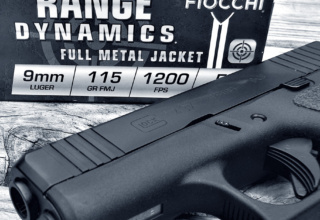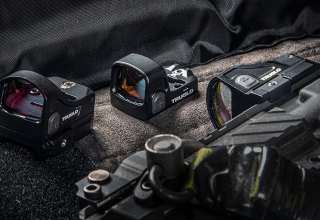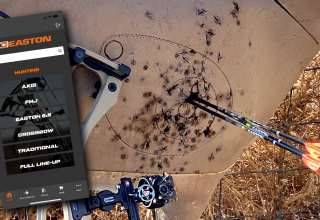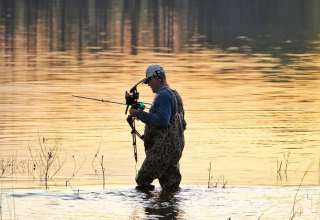Often, as I stand along the banks of a local river dressed in camo, wearing mud boots, and carrying a bow with a nocked arrow, passersby stop, look, and ask with genuine interest, “What are you doing?”.
My standard reply is, “Bowfishing.” Usually, this prompts more questions.
“How do you do that?”
“WHY do you do that?”
“Is it legal?”
“What do you do with the fish you catch?”
All good questions.
I started bowfishing to reduce the number of carp I was seeing in the local waters I fish with conventional tackle. Fishing for catfish at night in the spring, I would walk the banks and shine a flashlight into the water—always amazed at not only the numbers of carp present but also the size of some of them. I figured I would try and get rid of a few, and that’s when the passion started.
As it turned out, I wasn’t the only one who enjoyed this awesome summertime sport.

My first bowfishing rig started with an old Oneida recurve/compound hybrid I bought at a garage sale for $10. I took the bow to a local archery shop and let them set me up with an inexpensive bowfishing kit. It included an arrow, drum-style hand reel, and line.
My first attempts at shooting “rough fish” were less than spectacular. I took many shots and missed most of them. My string would get tangled and break, requiring me to to wade into the murk to try and recover my arrow.
After numerous trips back to the archery shop to buy more arrows and string to replace what I had lost, I eventually purchased a better system that allowed the line to free-flow without getting tangled and an arrow rest more suitable for the heavier bowfishing arrows I was using. From there, it was simply a matter of learning by doing, getting the feel of a properly outfitted bowfishing rig and discovering how to aim at underwater objects.
The good thing is that bowfishing gear is quite simple when compared to the many fine-tuned accessories used for bowhunting or 3D target shooting. The cost is also less. An inexpensive bow properly outfitted will do just fine.
Depending on the type of bowfishing you want to do, your equipment can and will vary.
I walk the banks along creek and rivers, stalking fish that are usually within 20 yards. Therefore, I want a rest that allows me to keep my arrow nocked and ready to launch. My current favorite is the TRUGLO SPRING•SHOT. It is similar in shape and function to a capture-type brush rest such as those used for bowhunting, yet the arrow is supported by a metal spring instead of bristles. This robust design holds the arrow securely in place and allows for easy clean-out of debris that accumulates on the arrows. The stainless-steel spring coil doesn’t wear down, and the rest is adjustable for windage and elevation. And that is a key point that many bowfishing beginners overlook.

Remember those frequent “misses” I mentioned? Those were due in large measure to the fact that my bow wasn’t correctly setup. Bowfishing rigs require the same basic tuning as any other bow. The rest should be adjustable so you can achieve a straight arrow launch. You also need some sort of sighting device if you don’t plan to shoot instinctive.
For sighting, I use a simple, single-pin TRUGLO sight with the pin zeroed for ten yards. Mostly the sight is used for windage alignment because distance is a highly variable factor when shooting fish. Distance can be difficult to judge without a ranging device, of course, but there are several other factors that compound the challenge. One factor is the depth of the target beneath the water. Another is the inherent refraction that causes underwater objects to appear higher in the water column than they are. This requires you to aim under the fish. How much under depends on all the above—distance and angle.
When fishing from banks, I always prefer as much elevation as possible so I can get a better and wider view into water and the glare is less intense up high than if you are standing down low. Thus, a good pair of polarized sunglasses are recommended to minimize glare.

For shafts, I use both Easton and TRUGLO arrows tipped with TRUGLO SPEED•SHOT or SPRING•FISHER bowfishing points, depending on the size of the fish I am after. A basic barbed point is fine for most common carp and smaller gar, and I especially like the new fold-back or pivoting barb styles. These new points keep the fish secured to the arrow as I reel them in, and the barb can be rotated backwards to remove the fish without having to first unscrew the tip.
Once you have set up your basic bowfishing rig, be sure to check your state and local regulations to make sure bowfishing is legal where you intend to fish. Also, check the regulations for “trash fish” disposal procedures. In some states, for example, it is illegal to put an invasive species back into the water, so know what you must do before you go. You can check with your local butcher and fishing shops to see if anyone may want the fish you shoot. Some species may be used for smoking, some for garden fertilizer, others for bait. See our recipe for Dutch Carp Cakes if you are in the hunter/gatherer spirit.
Bowfishing doesn’t have to cost a lot to get going, and even after you become more proficient, elaborate, expensive equipment is usually unnecessary (unless you are going after big species).
I usually do not use a boat, although many bowfishing anglers do use them. I have more fun walking the banks, looking for movement ahead, and then stalking the fish to make a clear identification. If I come across a fish that is a legal to shoot, I take the shot. It’s as simple as that.
 Another advantage of still-hunting fish from the banks is that you are in stealth mode and will see more wildlife. Also, keep in mind that many fish have good above-water vision because they must be aware of predatory birds. Movement and shadows can spook them into deeper water or away from the bank, so go slowly and do not wear loud, bright clothing. A good camo shirt can go a long way in avoiding unwanted eyes.
Another advantage of still-hunting fish from the banks is that you are in stealth mode and will see more wildlife. Also, keep in mind that many fish have good above-water vision because they must be aware of predatory birds. Movement and shadows can spook them into deeper water or away from the bank, so go slowly and do not wear loud, bright clothing. A good camo shirt can go a long way in avoiding unwanted eyes.
I started bowfishing because I wanted to get rid of invasive carp. Now, I prefer picking up my bow some days rather than my fishing pole. Some side advantages of bowfishing include staying in shape or improving physical condition due to all the walking. The muscle memory I rely on for shooting my hunting bow also stays sharp through the “off-season.” Sure, you can shoot targets during the spring and summer, but practicing stalking and holding your draw for the right shot and then shooting at moving targets—that’s real fun that will translate directly to bowhunting success next fall.
- Bowfishing IS the Answer! - June 29, 2020
- Extend Your Bowhunting Season This Summer…On The Water! - May 30, 2019















